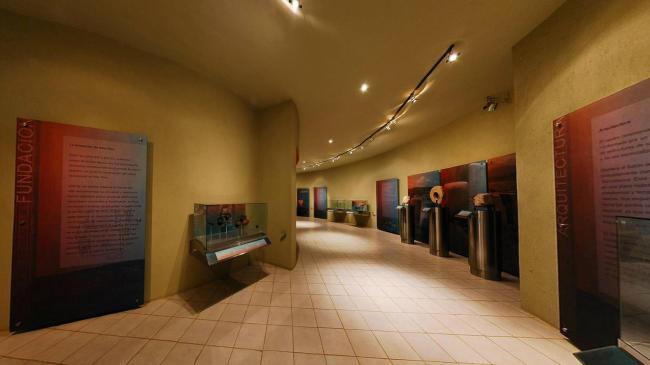
Foundation and Peak
Sala
This section begins with a video that introduces the visitor to Mesoamerican cosmogonic concepts.
It then highlights the importance of the Chalchihuites culture as the result of a series of cultural changes. It references the foundation of the ceremonial center between the years 450 and 500, over the remains of a small village from the formative village period. These transformations were rooted in astronomical and religious interests emanating from Teotihuacan, where a group of priests set out to find "the place where the sun turns," referring to the point where the sun stops its northward movement at the summer solstice before heading south again. By the 6th century, Alta Vista reached its peak, reflected in the construction of most of the ceremonial center. The site's architectural layout shows clear similarities to Teotihuacan residential complexes.
The objects displayed here—anthropomorphic and zoomorphic figures—confirm the ceremonial center’s significance. Ceramic pieces with highly important iconography illustrate the assimilation and integration of cosmogonic and religious concepts from Classic-period Mesoamerica. A particularly notable burial offering found in the Hall of Columns includes the remains of sacrificed individuals and consists of four goblets with eagle-and-serpent iconography and a flute fragment decorated with a pseudocloisonné technique, along with a súchil-type jug and a small polished brown ceramic pot.
In the architecture area, the religious layout of the ceremonial center is presented. Construction techniques and the orientation of the main buildings are discussed, especially how their corners are aligned with the cardinal directions. A red-pigmented battlement fragment and several layers of plastering are displayed.
Another noteworthy offering was deposited at the Pyramid of the Sun (Structure 2B), associated with high-ranking individuals. It included ornaments (rings, necklaces, pectorals, pendants, etc.) made of flint, turquoise, shell, and ceramic.
An adjoining display case presents objects that show how the Chalchihuites culture participated in complex exchange networks, acquiring goods and materials not native to the region such as shell, salt, cotton, and notably, turquoise. These contacts also facilitated the transmission of technical and ideological concepts.


